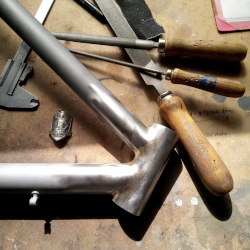A cyclist weighing 70 kg riding a bike weighing 8 kg, climbing a 7% grade while producing 300W of power, theoretically can ride at 17.7 km/h. If they manage to save 3 kg between bike and body weight, they can ride (while maintaining the same power) at 18.2 km/h, an increase of 0.5 km/h, which translates to 6.1 seconds per kilometer. If the climb is 10 km long, that's 61 seconds saved.
According to Fred Grappe, an additional 1 kg to carry uphill on a 7-8% gradient requires an extra 5W of power to maintain the same speed. Saving 100g yields only 0.5W, and 500g a mere 2.5W. These are insignificant values when considering a power output of 300W.
Therefore, two bikes equipped with the exact same components but with frames, one weighing 950g made of carbon and the other 1450g made of steel, with a total difference of 500g, would require practically the same amount of energy to ascend a hill. However, as mentioned earlier, the heavier structure should have an advantage when descending.
Aerodynamics should not be overlooked. A structure with less surface area, like high-quality steel frames, is advantageous (as mentioned at the beginning of the article) when dealing with aerodynamic disturbances, compared to oversized carbon frames that, by their nature, have twice as much exposed surface area to the wind.
The Italian Cycling Federation (F.C.I.) and the International Cycling Union (U.C.I.) impose rules, including the minimum allowed weight for a racing bicycle, which is 6.8 kg. With a frame made of modern steels and the right components, these weights can be easily achieved (or even less). So, the question arises: why use mass-produced carbon frames without the option of customization, which leaves doubts about structural integrity after a fall, instead of a super-technological, custom-made steel frame crafted by artisans?
Vincenzo Forgione.








 Every frame I craft is tailored to your unique needs and preferences, ensuring a perfect fit and unmatched performance
Every frame I craft is tailored to your unique needs and preferences, ensuring a perfect fit and unmatched performance